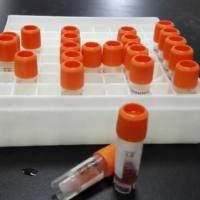Probe Ordering and Distancing by FISH
互联网
552
In situ hybridization (ISH) has proven to be a powerful methodological approach to visualize specific nucleic acid sequences directly within the morphological context of the cell. The method involves hybridization of labeled probes to denatured target chromatin that has been fixed on microscopic slides, followed by visualization using standard (immuno) cytochemical procedures. Originally, probes were marked with radioisotopes and visualized by autoradiography (1 ). This provided a high-sensitivity, but limited resolution owing to the track of the decaying particle in the photographic emulsion. Also, radioactive procedures did not permit identification of multiple probes hybridized simultaneously to the same samples. To date, these types of labels have been completely replaced by fluorescent- and enzyme-generated absorbing dyes. One can distinguish direct procedures, in which the nucleic acid probes are modified with the reporter molecules and visualized directly after the hybridization reaction (2 –4 ). In indirect procedures, the probes are labeled with haptens, which require further immunocytochemical processing of the slides to introduce the reporter molecules (5 –7 ).








